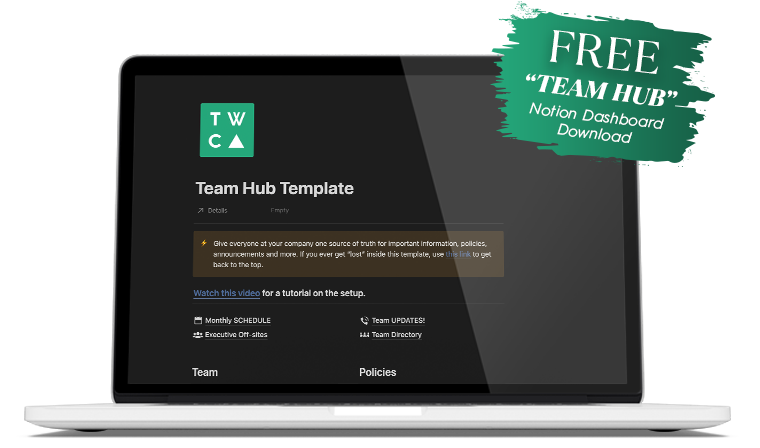The Tension With Retention
I remember when I received my very first refund request for my consulting services.
It can be one of the lowest feelings for an entrepreneur.
At first I was angry. Instantly went defensive (easy to do).
“I answered every one of their questions (even the really stupid ones)! I took extra time to walk them through exactly what to do to fix their business. Now they want their money back? SCREW THEM.”
Then I shifted to anxiety. Had I missed a warning sign that something was wrong?
There I was, at 10 o’clock at night, looking through all of our email communications, trying to see if this person had ever expressed a hint of dissatisfaction.
Then I shifted again… this time to hopeful.
“Maybe I can get on the phone with them. Save the sale. Offer them some additional services or support if they just stay.”
The spiral went on and on – further downward.
Eventually, I settled down. Paid them the money back.
However, it took me a lot longer to learn the lesson that was baked into that experience.
You see, the traditional high ticket model is so obsessed with the idea of MORE.
- More clients this month than last month.
- More opportunity provided by marketing.
- More closes from sales.
What is rare is taking a moment to consider this:
What happens after the client hands you their 4 or 5-figure investment?
Are you continuing to dispense value? Are you continuing to be “worth” that investment after it hits your bank account?
I’ve discovered that there are really only 5 reasons that clients decide that they don’t want to stay in a consulting program, and I want to run through them with you.
Let this list serve as a sort of rubric for how you take care of the clients you are investing your time and money to acquire.
#1 – Lack of Personalization
#2 – Lack of Communication
Communication is the key to any coaching relationship.
When clients feel like they are not being heard or that you (or your coaches) are not responsive to their needs, they start to disengage and become frustrated.
This goes hand-in-hand with point #1. If you’re going to actually understand how to help the people you serve, it starts by being in regular communication with them.
Whether it’s you or a fulfillment person/team creating the touchpoints, there must always be open and clear communication.
(NOTE: This goes BOTH ways. I’ve refunded or refused to work with clients because they couldn’t be bothered to respond to any emails, texts or calls from my team. If you are a high quality consultant, don’t settle for low quality clientele.)
#3 – Lack of Results
Shocker – when somebody becomes a client in your program, they have at least SOME expectation that they will get results from working with you.
If this surprises you, stop reading right now (and maybe don’t be a consultant).
There is a lesson to be learned here though, and it’s about expectations.
It’s critical that every stage of your client’s journey includes a proper setting of realistic expectations.
Whether it’s the person making the Sales calls, the initial onboarding, etc, etc.
Each step along the way should include a recommitment by both parties to what the relationship will look like and what the fruit of that relationship will be (the results).
Beyond that, once the expectations are set, it’s important for coaches to provide regular feedback and progress updates to their clients.
If your program includes a “process” for the client to commit to in order to see their desired result (going from A to B), they should be easily able to tell where in the process they are and how far removed they are from the outcome.
#4 – Lack of Accountability
High achievers with quality mindsets crave accountability.
They desire being held to a standard, even when it hurts. If you want quality people inside of your program, it starts with setting a level of accountability.
Are there evaluations at any point in your curriculum or in your coaching process? Are there end of week, end of month, or (depending on the length of your program) end of year touch points to help your clients see what they’ve already accomplished and to propel them forward on the things that still need to be completed?
When this accountability doesn’t exist, your bottom-feeder clients will hang around (because your program generate enough “friction” to move them out of their apathy) and your top quality, high-performance folks will bounce because they’re brushing shoulders with too many bottom-feeders.
#5 – Lack of Value
Okay, this one is sort of an amalgamation of all of the other 4 combined, but I think it warrants its own spot on this list, and I’ll explain why.
Ultimately, clients leave consulting or coaching programs when they feel like the value they’re receiving is out of balance with their investment.
The best way to net valuable clients is to be WORTHY of them.
- Premium quality content
- Personalized support
- Tangible results
When the client doesn’t have clarity, doesn’t have a means of measuring progression, and isn’t being held accountable, the value to investment ratio begins to topple.
Speaking of Clarity… It Starts With Your Team
Providing clarity for your clients starts with having clarity with your own team!
When everyone knows and understands the “north stars” inside of the business and has them all in one central location, they function better as a unit, and transfer that valuable understanding to how they treat the people they serve.
That’s why we built the Team Hub, a fully-outfitted, plug and play Notion wiki to house all of the most central components of your business.
From your values and policies, to your meeting notes, to your content calendar, to your SOPs – all in one easy to reference database.
Download your free template for it now, and unify your teams efforts!


